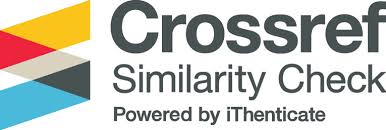ANTIBACTERIAL AND ANTIFUNGAL ACTIVITIES OF KRANGEAN’S STEM BARK (Litsea cubeba Pers.)
Abstract
Litsea cubeba Pers or Krangean is a traditional medicinal plant widely used as an antidiarrheal, skin diseases, as well as antiseptic agent. In addition to essential oils, this herb also contains various components such as tannins, saponins, flavonoids and alkaloids. The purpose of the study was to determine the activities of n-hexane fraction, ethyl acetate, and water from the ethanolic extract of the Krangean stem bark as antibacterial and antifungal properties against E. coli ATCC 25922, S. aureus ATCC 25923 and C. albicans ATCC 1023.
Krangean stem bark extraction was conducted by maceration method using 70% ethanol as solvent, followed by fractionation with n-hexane, ethyl acetate, and water as solvent. Antibacterial and antifungal activities were determined by diffusion and dilution method. Diffusion method was used to measure the diameter of the inhibitory area against bacteria colonies with concentrations used were 50%, 25%, as well as 12.5%. Dilution method (dilution tubes), was conducted in serial dilutions of various concentrations, 50%, 25%; 12.5%, 6.25%; 3.12%; 1.56%; 0.78%; 0.39%; and 0.195%.
The results showed that n-hexane fraction of the ethanolic extract of the Krangean’ stem bark had the highest activity against E. coli ATCC 25922 and C. albicans ATCC 10231 compared to other fractions, based on the average of diameter inhibition values. The diffusion method showed that nhexane fraction at concentration of 50% had inhibitory activity against E. coli ATCC 25922, and C. albicans ATCC 10231 with the average inhibitory power were 30 ± 0,00 mm and 20,4 ± 0,58 mm, respectively. n-Hexane fraction could kill E. coli ATCC 25922, and C. albicans ATCC 10231 with the Minimum Killing Inhibitory Concentration (MKC) value were 1.56%, and 0.39%, respectively.The presence of essential oils and triterpenoid in n-hexane fraction were detected in the preliminary phytochemical tests.












